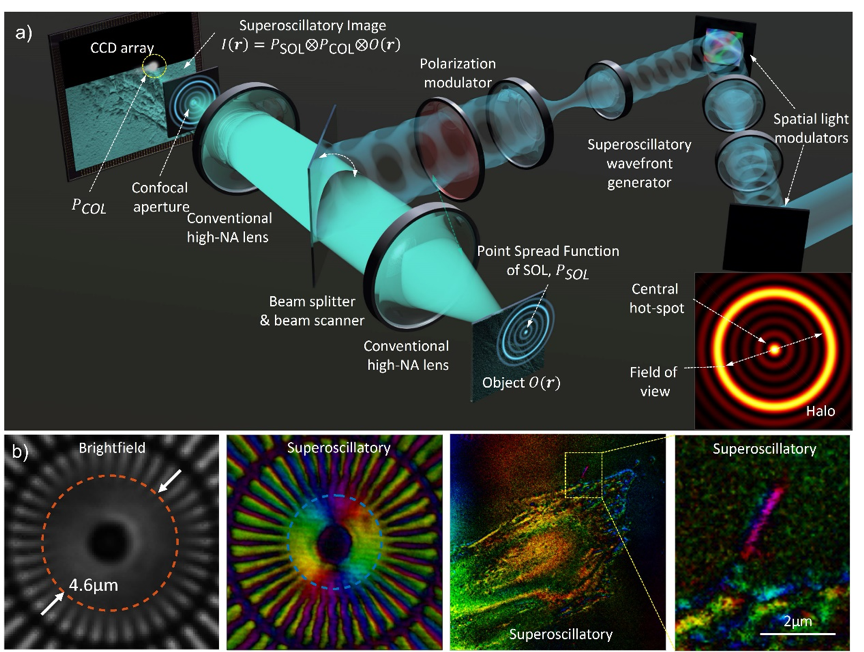Superoscillatory optical field is one typical example of structured light. It features many important unprecedented optical properties, including subwavelength intensity localization, fast phase variation and singularity, giant wavevector, and energy backflow.
Therefore, under certain conditions, it is possible to achieve sub-wavelength focusing and imaging that breaks the traditional optical diffraction limit in the optical far field. Its fast-changing phase properties make nanoscale lateral displacement detection possible. In combination with superoscillatory illumination and deep learning algorithm, the resolution of optical imaging and the accuracy of micro-nano displacement detection can be increased significantly.
Recently, Prof. YUAN Guanghui from School of Physics of the University of Science and Technology of China (USTC), collaborating with the joint professor Dr. Nikolay ZHELUDEV from Optoelectronic Research Centre (ORC), University of Southampton concluded the basic attributes of superoscillations and explored its up-to-date technology applications for optics. This review, entitled “Optical superoscillation technologies beyond the diffraction limit,” was published in Nature Review Physics.
In this article, the researchers successfully defined and explained the main characteristics of free-space band-limited superoscillatory fields in comparison to their counterparts in plasmonic near fields. Moreover, the construction methods of superoscillatory lens for focusing light beyond the conventional diffraction limit were summarized, which includes binary masks, metasurface designs, and dynamic control with spatial light modulators or digital mirror devices.
They also concluded emerging applications of superoscillations in far-field sub-diffraction imaging, nanometrology, label-free subwavelength bioimaging, static and dynamic superfocusing, the artificial intelligence enabled deeply subwavelength topological microscopy, and so on. Among them, the applications in nanometrology and nanoimaging with superoscillatory illumination were heavily discussed as well as artificial intelligence assisted topological microscopy. Benefiting from the fine structure in the superoscillatory fields, it allows the next generation structured illumination microscopy and metrology devices to achieve nanometer precision and easy miniaturization.
This review article summarized our existing knowledge of superocillations, and enhanced our understanding of its properties and the opportunities created by it.

Optical superoscillation for label-free sub-diffraction bioimaging. (Image by Nikolay ZHELUDEV and YUAN Guanghui)
(Written by WANG Zhaokun, edited by WANG Zhaokun, USTC News Center)
